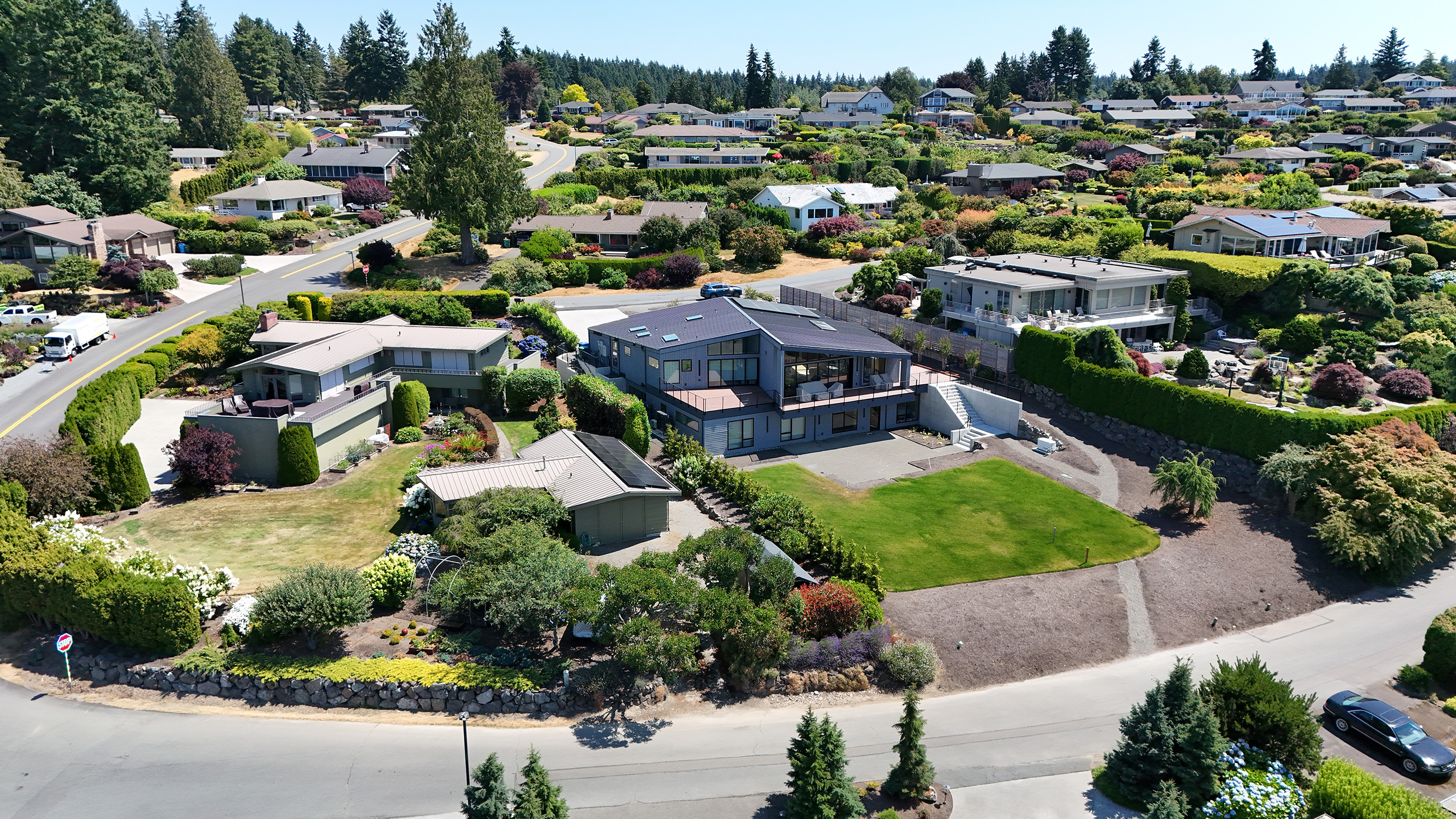The house is located in Innis Arden, near Seattle, and was designed to preserve views of the Puget Sound and Olympic Mountains while complying with strict local regulations. The 6340 SF project sits on a sloped lot and is discreetly integrated into the terrain with a low profile. The design prioritizes views, light, and energy efficiency through large openings, sunken patios, and sustainable systems like ICF walls and solar panels.

















The two-level home includes a great room, terrace, and bedrooms below grade, with radiant floor heating and high-efficiency HVAC systems supported by HRVs. Structural coordination was key, involving major excavation and remote collaboration with Riverstone Engineering to enable large open interior spaces with minimal supports.



Related projects






